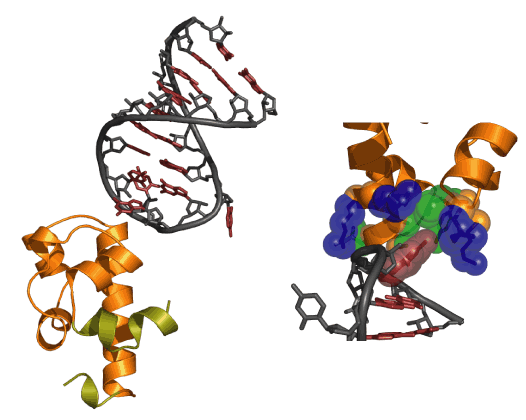

Research Focus
Dr. Johnson is an expert in biomolecular structure determination using nuclear magnetic resonance (NMR) techniques. His laboratory specializes in RNA structure determination and understanding how RNA molecules interact with proteins and small molecules. RNA-protein interactions are of fundamental importance in biology and control many important biological processes such as mRNA splicing, protein synthesis, and translational regulation. Dr. Johnson's laboratory is one of only nine labs worldwide, and the first in Canada, to have determined the structure of a protein-RNA complex using NMR methods. To complement the structural work, detailed biophysical studies are performed in his laboratory to gain functional insights into the biochemical mechanisms studied.
Our research is focused on understanding how functional nucleic acids work. Nucleic acids are tremendously versatile molecules. Aside from their role in information storage and transfer, DNA and RNA play active roles as functional molecules. They can act as catalysts, participate in ligand binding and play a role as material for building nanoscale molecular devices. However, the details of how these types of molecules work is often not known. Their structures, how they interact with other molecules, and how they fold into an active molecule are poorly understood.
We use nuclear magnetic resonance (NMR) to determine the three-dimensional structure of molecules and isothermal titration calorimetry (ITC) to study binding interactions. As a model system for discovering how functional nucleic acids work, my laboratory is currently investigating how the cocaine-binding DNA aptamer operates.
